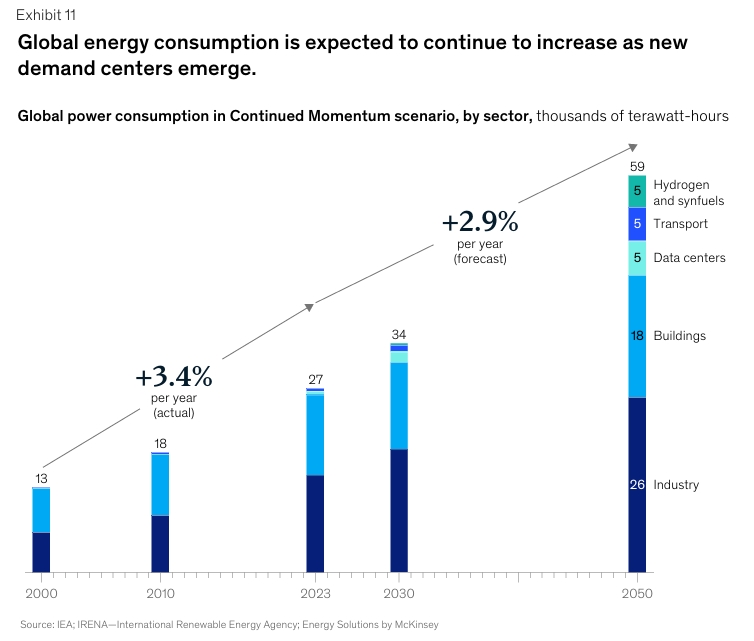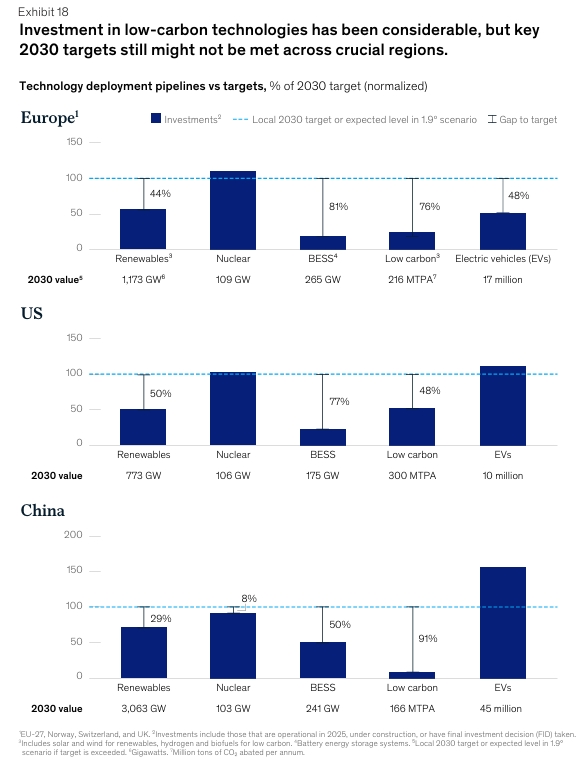
Global energy consumption to rise due to data centres, EV demand: report
Consumption will likely increase by 2.9% annually from 2030 to 2050.
Global energy consumption is expected to increase by 2.9% per year from 2030 to 2050, with emerging data centres and rise in electric vehicles (EVs) seen as new demand drivers, a report said.
“Data centres could drive a sharp increase in energy demand,” McKinsey & Company said in its Global Energy Perspective 2025 report.
Both global data and transport power consumption in the continued momentum scenario by 2050 are projected at 5,000 terawatt-hours.
“After analysing a detailed pipeline of data centre projects, we predict an average global growth rate of 17% per year in data-centre-related power demand between 2022 and 2030,” the report said, with the United States, Western Europe, and China accounting for the growth.

In the US, the annual growth rate in data-centre-related power demand of nearly 25% is seen until 2030. If continued, data centres could account for more than 14% of US power demand by 2030, assuming efficiency gains in centre infrastructure, the report added.
Beyond 2030, data-centre energy demand growth is highly uncertain in any region, McKinsey & Company said.
Meanwhile, transportation has become a bigger source of electricity consumption, mainly because of the increased uptake of passenger EVs and government incentives that encourage sustainable transport.
"Electrification of public transport in major Asian cities, subsidies for EVs across continents, and the European Commission’s Electrification Action Plan for industrial electrification – have contributed to the growth in electricity demand,” the report said.
Despite the growth, the report said that “these incentives have been insufficient to meet decarbonisation targets in the majority of regions that have set them.”
In Europe and the US, investments in solar and wind for renewables and hydrogen and biofuels for low carbon are 76% and 48% behind their 2030 decarbonisation targets, respectively.
China fell behind in the low carbon target by 91%. However, the country is projected to exceed its EV output by 2030 with 45 million EVs produced, compared to 17 million in Europe and 10 million in the US.

Meanwhile, buildings and industry will continue to account for rising electricity demand until 2050, consuming 18,000 and 26,000 terawatt hours, respectively.
This will be reflected by improving living standards and electricity access that is continuing in emerging markets.
“Electrifying industrial energy use remains difficult around the world,” McKinsey & Company said, “because 30% of industrial-heat demand comes from high-temperature processes that are hard to electrify.”
Asia is expected to account for approximately 75% of gas demand growth by 2040. This high demand is due to a cost- and emission-driven coal-to-gas switch in Asia’s power sector and the increasing use of gas for heating by building and industry sectors.
Gas demand in China is expected to plateau around 2040, whilst demand plateaus are expected in other Asian countries after 2040.















